Endangered fish thrive in newly announced MPA’s
Endangered humphead wrasse are thriving in newly announced Seychellois marine protected areas
Off the east coast of Africa, in the island nation of Seychelles, a unique marine sanctuary bustling with life can be found. Situated on the remote outer perimeter of this country you’ll find D’Arros Island and St Joseph Atoll, an oceanic area abundant with a wide variety of marine biodiversity including an enormous coral reef fish called the humphead wrasse.
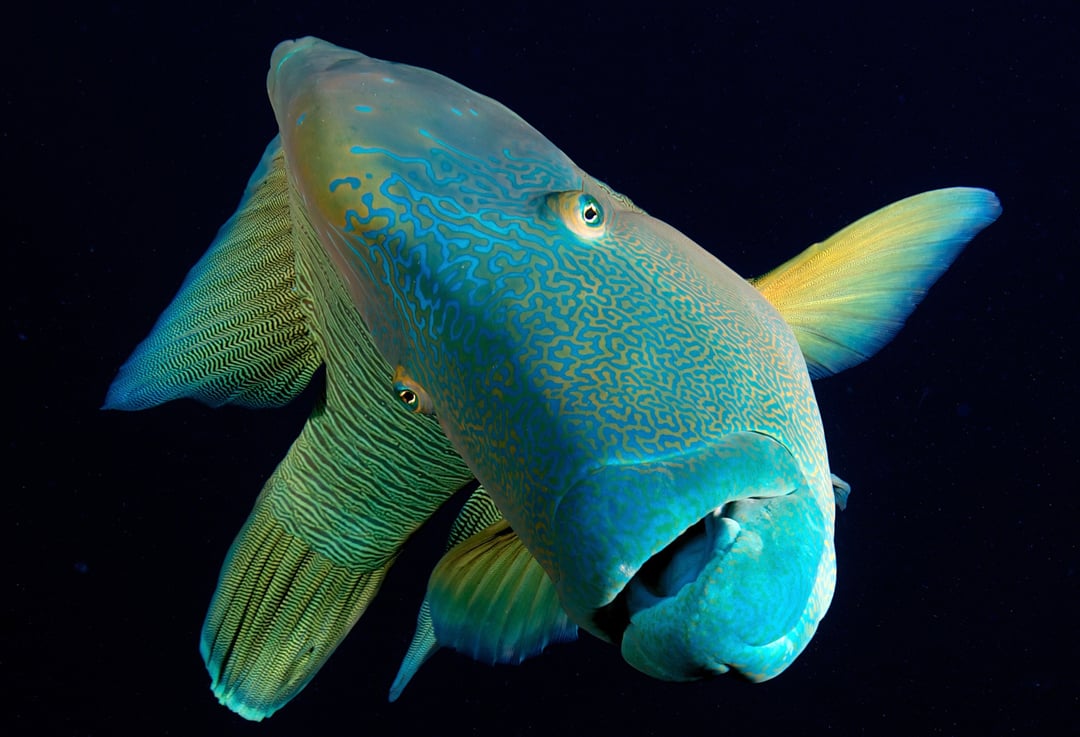
The Humphead, Maori or Napoleon (to mention but a few of its many names) wrasse. Photo © Gregory Piper | Coral Reef Image Bank
Easily recognisable thanks to the prominent bulge on its forehead, the humphead wrasse has a lifespan stretching 30 years and is one of the world’s largest reef fishes capable of growing to lengths of up to two metres and weighing more than 180 kg. They frequent productive coral reef areas in the Indo-Pacific region in search of hard-shelled prey including molluscs, starfish, and crustaceans. Despite their importance for tourism and fisheries, these iconic giant fish are listed as endangered by the International Union for the Conservation of Nature (IUCN).
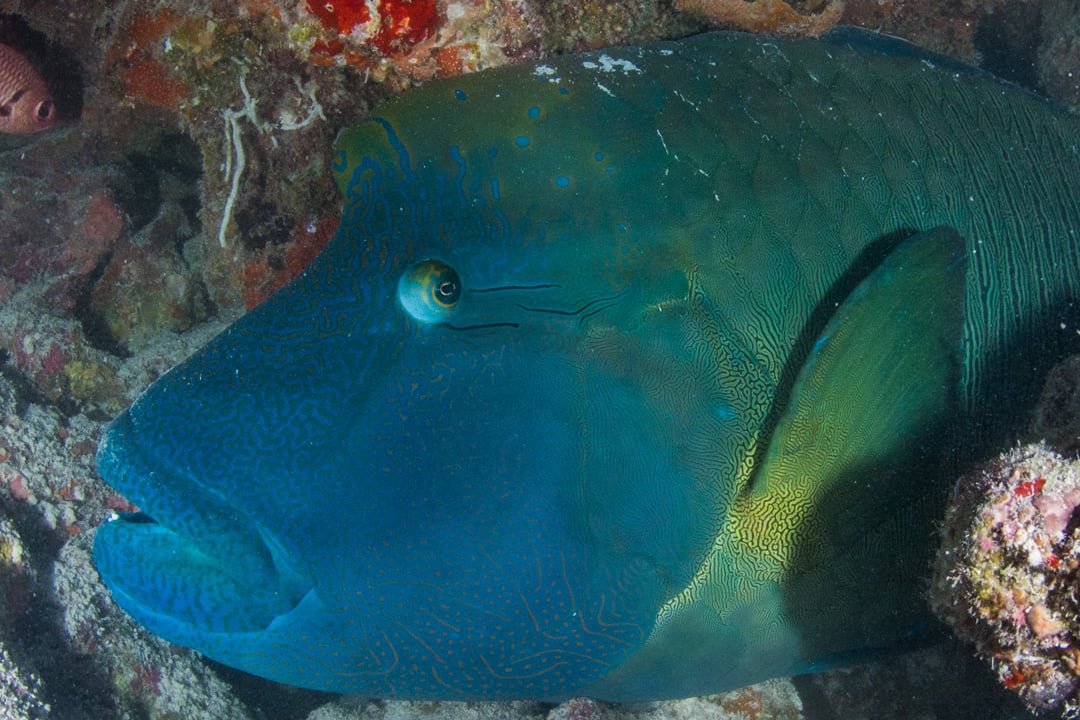
Sleeping humphead wrasse on the coral reef at D’Arros Island. Photo by Ryan Daly | © Save Our Seas Foundation
The main driver contributing to humphead wrasse decline is overexploitation through fishing activity. They are a lucrative product for export in the restaurant industry selling for more than 100 US dollars per kilogram. This charismatic species has a complex social structure and takes several years to reach sexual maturity, meaning intense fishing pressure can quickly wreak havoc on population levels. On top of this, habitat loss is also creating a challenge for humphead wrasse numbers to bounce back because they depend on healthy coral reefs – ecosystems that are being damaged beyond repair due to rising ocean temperatures.
Currently, the survival of humphead wrasse is dependent on human intervention to alleviate some of these problems. Recently designated marine protected areas at D’Arros (zone 1) and St Joseph (part of a larger zone 2) could directly benefit the conservation of this species according to a new study published by scientists from the Save Our Seas Foundation (SOSF) D’Arros Research Centre.
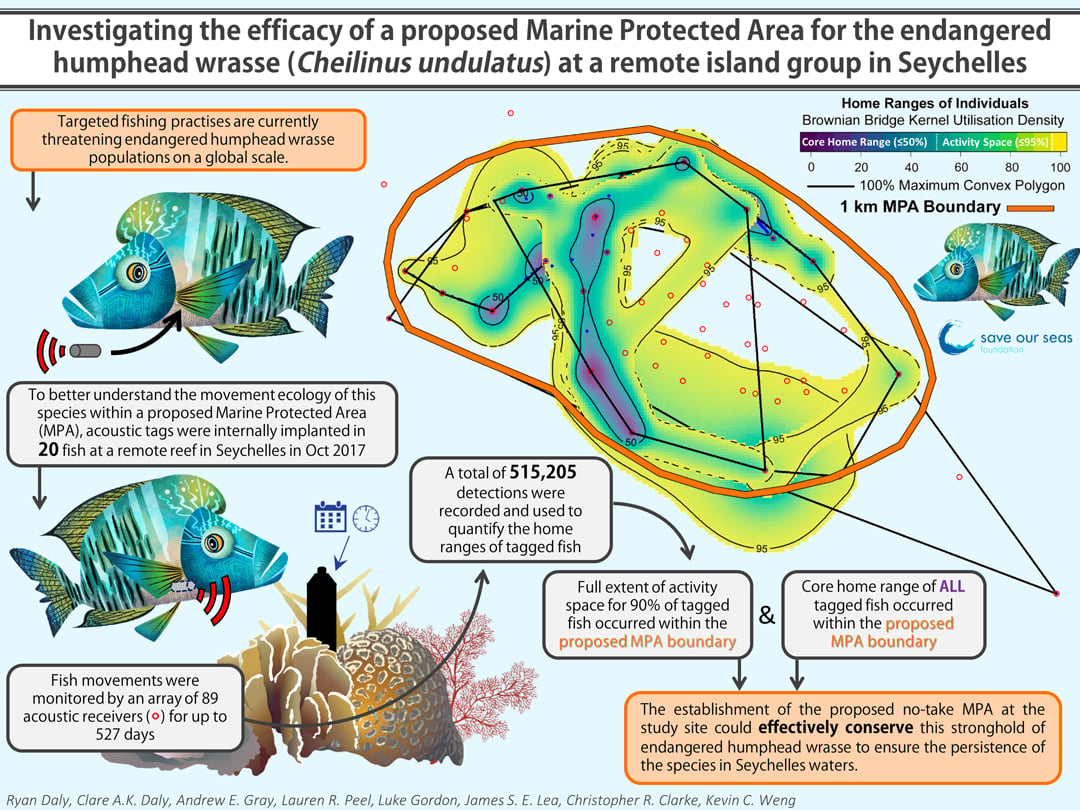
Image by Lauren Peel, SOSF project leader. Humphead wrasse illustration by Rohan Chakravarty
Published in the academic journal Endangered Species Research, the study represents the first comprehensive assessment of a humphead wrasse refuge habitat in the Indian Ocean. Using acoustic tracking tags on 20 individual fish, SOSF project leaders have found that the humphead wrasse population around D’Arros and St Joseph are unique, exhibiting high levels of site fidelity over the 500 day research period. In fact, the tagged humphead wrasse rarely travelled more than a few kilometres from the research site, a part of SOSF’s expansive Amirantes acoustic array platform.

This particular wrasse is the first and largest individual tagged in the Indian Ocean. Photo by Ryan Daly | © Save Our Seas Foundation
This knowledge confirms the benefit of newly added marine protections at D’Arros and St Joseph. The conservation zone will encompass a proven core home range area of all tagged humphead wrasse and will also effectively conserve this stronghold of endangered fish to ensure the persistence of the species in Seychellois waters. On top of this, the new marine protections will also have a trickle-down effect, positively impacting the humphead wrasse’s local ecosystem, including 15 other threatened species known to occur there.
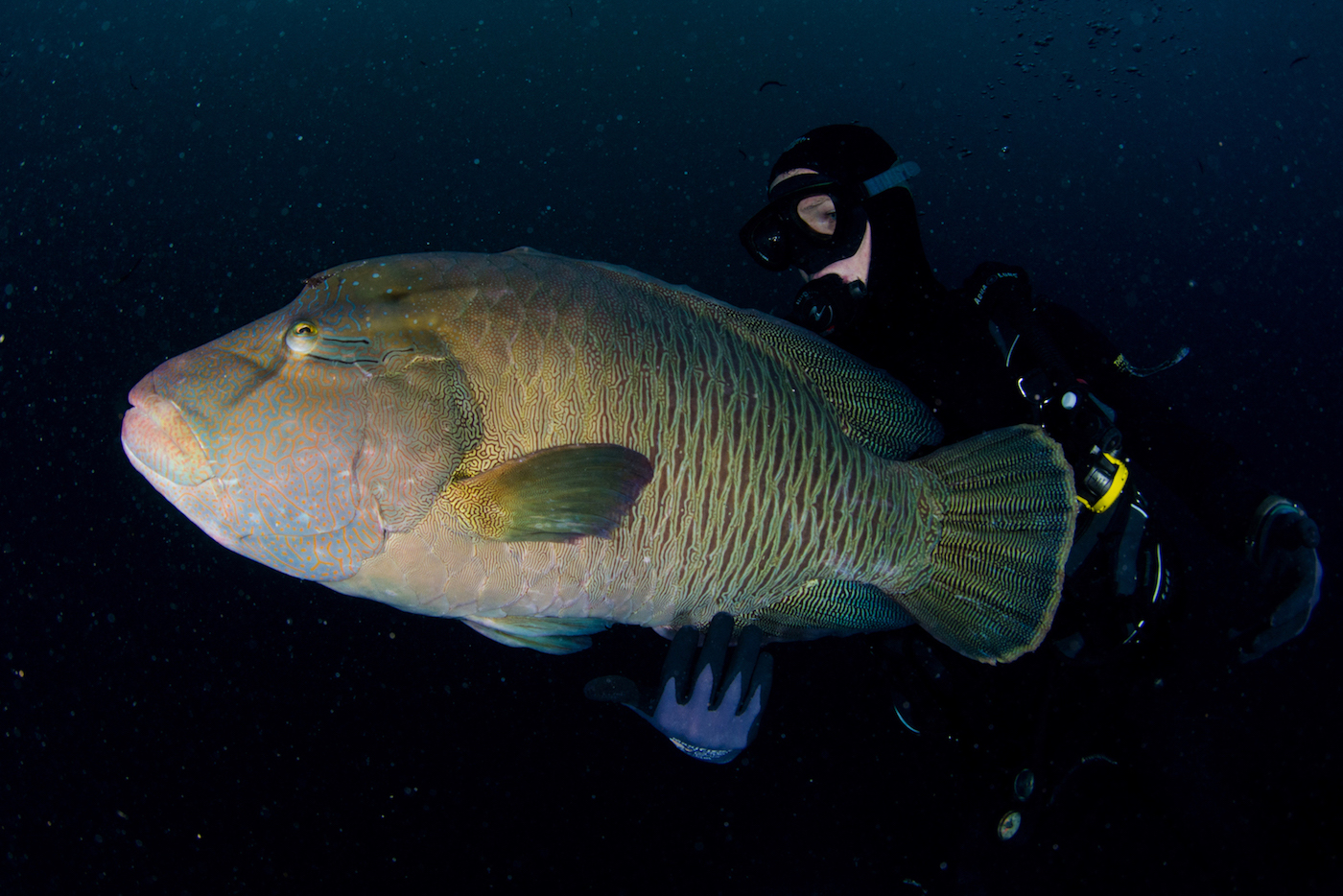
SOSF researcher, Andrew Gray releases the fourth of 20 tagged humphead wrasse in October 2017. Please note, the divers in these images are specialised humphead wrasse researchers, and are carefully guiding the fish as part of this study. Recreational divers should not touch or feed this rare species of fish. Photo by Ryan Daly | © Save Our Seas Foundation
While the disappearance of humphead wrasse from our oceans isn’t as well reported as that of other endangered marine creatures, these large fish play a crucial role in reef communities and even act as an umbrella species, indirectly benefiting others through human conservation efforts designed to protect them. These captivating home-bodies deserve our admiration and respect. Thankfully, the humphead wrasse living at Seychelles’ D’Arros Island and St Joseph will have the opportunity to thrive in their new sanctuary.
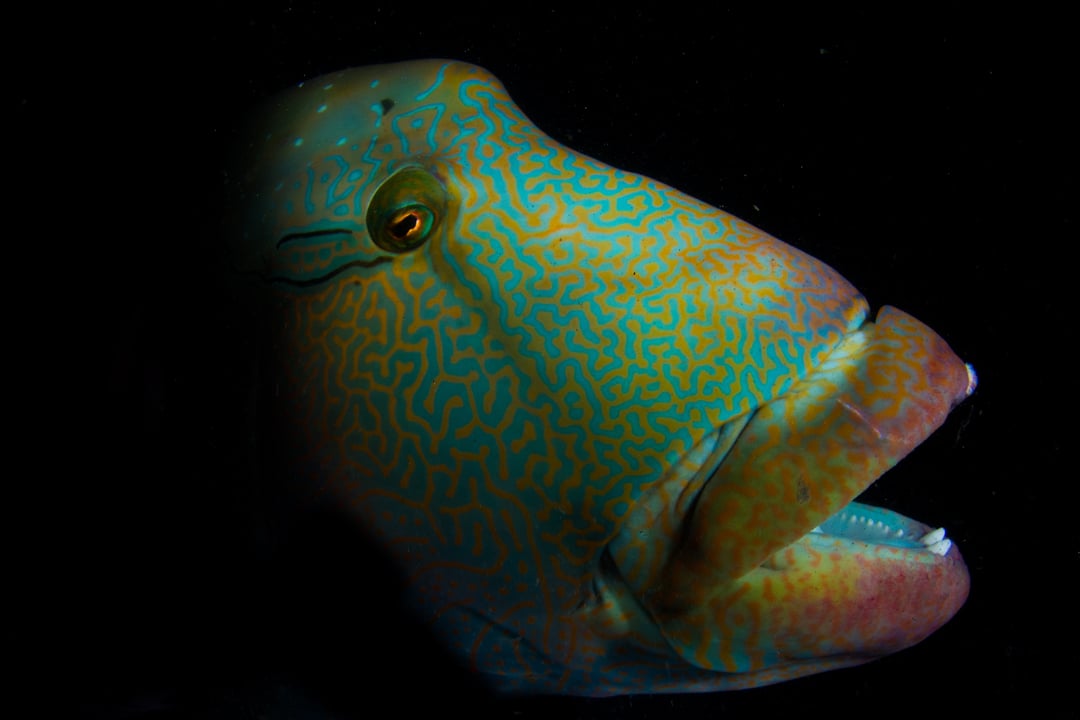
Sleeping humphead wrasse. Photo by Ryan Daly | © Save Our Seas Foundation
